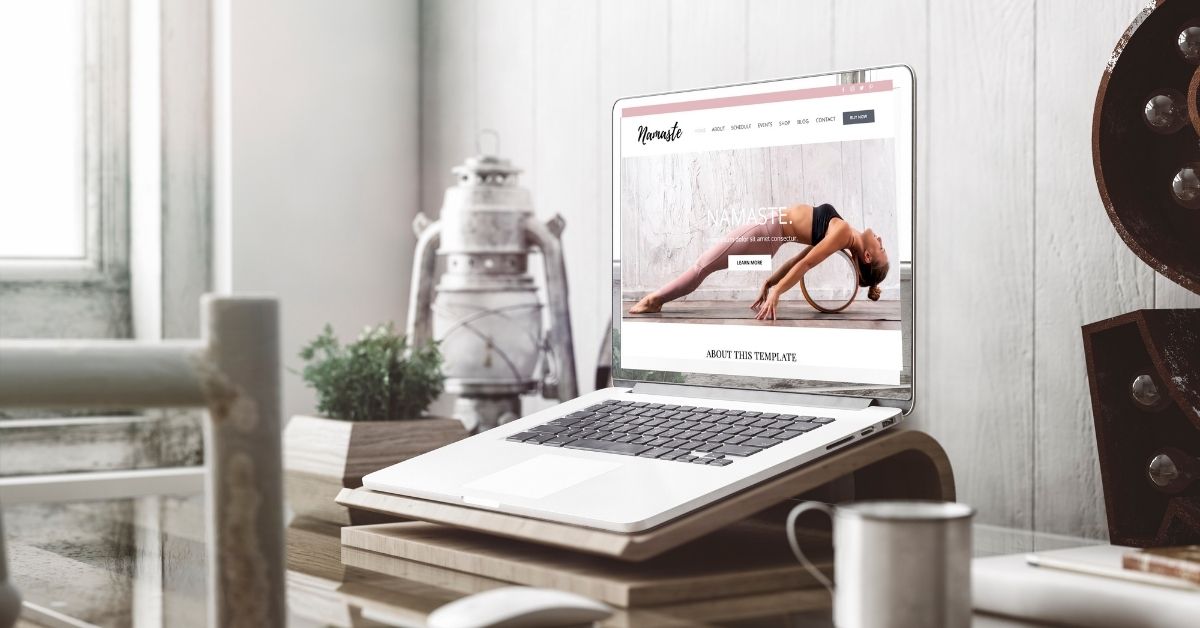I just finished the website redesign for the lovely Margherita Dal Pra (you were a total dream client!) and couldn’t be more happy with the results.
Margherita knew that it was about time for an update of her website. Her old website quite simply didn’t reflect the quality of her teachings and retreats anymore and she decided to get my help to create a new website with a modern and fresh look-and-feel.
But redesigning your website isn’t a task to take lightly. It requires a good deal of thought, time, and potentially money, but the upside can be enormous.
While you can find many reasons not to redesign your website, here are some excellent reasons why you should get your redesign plans off the ground.
You H-A-T-E your website
When someone asks you for your website, do you want to hide in the corner and mumble something about it being redone soon? If you aren’t sharing and promoting your website because you’re embarrassed by it, it’s definitely time to get a redesign. Until you get a website that you absolutely adore, you won’t be proud to show it off. And if you don’t want people looking at your website, that’s a problem that needs to be fixed.
You don’t get the results you want
Is your website gorgeous, functional, and pixel-perfect beautiful? Awesome! But if you aren’t getting the results you want, it might be time to change things up. Your website should be more than a good-looking digital business card, you want to inspire your visitors to take action. For example check out your teaching schedule, book a retreat or sign up for your mailing list.
Here are a few questions you should ask yourself:
- Do your buttons and other call-to-actions you use on your website convert visitors into customers?
- Does your homepage inspire people to learn more by digging deeper, or is it a simply aesthetically pleasing page that conveys little value?
- Do you have more than one alternative for people to sign up to your email list?
- Does your site’s look and feel speak directly to your target audience?
Your website just doesn’t work like it should
This might seem obvious, but you’ve probably stumbled on websites every now and then that are dysfunctional, to put it lightly. If your website takes a long time to load, or worse yet, has broken functionalities, people aren’t going to stick around long and it might be time to retire it. How you – and others you might ask to test your website – answer these questions can point you in the direction of a redesign:
- Can a visitor readily find the most basic things on your website, such as contact information or where you’re based?
- Is your website navigation confusing?
- Is important content hidden, for example behind a cryptic name in your main navigation menu?
- Are your product and service offers completely up-to-date?
- Do all links and forms work?
It’s painful to look at your website on a phone
This should be obvious in 2017 but many websites are still not responsive. When I look at my Google Analytics I can see that over 50% of all my users visit with a mobile device – if your site isn’t responsive yet, the chances you’re losing visitors and maybe even potential customers are high.
If this tech gobbledygook is confusing you, here’s what it’s all about. Responsive means that the website layout automatically adapts to the screen size. You can test yourself if your website is responsive by changing the size of your browser window. If the website changes and still looks good when you make your window really small your website’s responsive.
Your website looks like it’s straight out of the 2000…
I’m all for vintage and retro styles but there are limits. If you think your website looks a little outdated, chances are your visitors will think so too. Having an up-to-date design gives your website and you more credibility and helps to build trust. This doesn’t mean that you have to incorporate every new design trend, but your website should not look like you’ve neglected it for the past 5 years.
What you want to look out for:
- Very small fonts that are hard to read
- Too many different fonts
- Dark background colors
- Not enough whitespace, everything’s crowded close together
- No consistency, every page looks different
Your brand and your website look like they have nothing to do with each other
I know, relationships can be complicated. But your brand and your website need to fit together. It’s important that all your marketing flows together and is obviously from the same business. You should use the same logo, colors and fonts in all your marketing materials – your website, business cards, social media posts, newsletters, flyers, ads… everything should present you and your brand. If your website looks like it’s from a totally different planet it doesn’t help building trust, it hinders conversion (people actually booking your retreats online for example) and might hurt your business.
Your competitors updated their websites
Obviously, you don’t need to give your website an overhaul every time one of your competitors updates theirs. This is not about who has the more beautiful website – you can congratulate them on a job well done and move on.
Having said that, if they make changes that improve their search rankings substantially this can mean that your website gets pushed down on searches so less people will find you online. And this can really hurt your business. So in the end you might want to take action, too, and improve your website.
